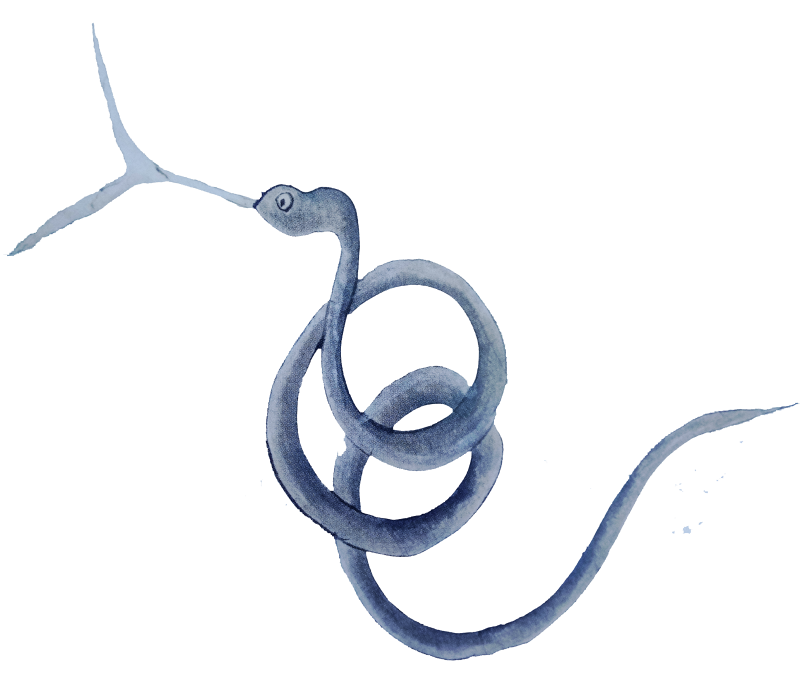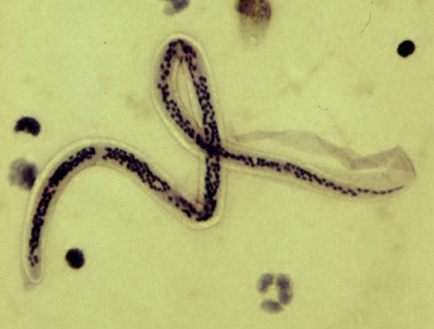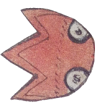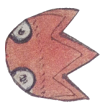
DAY SIXTEEN: JINZOU NO HIGE MUSHI
("Bearded Kidney Bug")
Written by Jonathan Wojcik, Researched and Translated by Rev Storm

If you think this looks like a cartoon snake with an excessively large tongue, you're way off; that long, white, fuzzy, forked protrusion is its
beard! You'll also notice a hump just behind its head, which is supposed to be a "hunched back." A hunchback, especially that associated with the elderly, is the only symptom said to be caused by this creature, and its whole existence is a case of wordplay, because one way of saying hunchback is "semushi," which can also be interpreted as "back bug!" This is more than mere "joke" however. In English we tend to think of puns as a frivolous and childish thing, but the double meanings of some words are thought to be spiritually powerful in many cultures including both Japan and China.
Design Review:
I can't say I'd have thought of the area just behind the head as a "back" in a worm-like or snake-like animal, which makes me think almost all of this creature consists of a tail. This and the thought of that huge thing being a beard make for a very funny looking creature once you understand what you're looking at.
TODAY'S REAL WORLD PARASITE:
Wuchereria bancrofti

There are no parasites that can cause a hunchback, but there is a parasite that can cause equally if not more debilitating physical malformities, the nematode responsible for Filariasis. This worm is one of the few known parasitic animals to be spread by the bite of mosquitoes, and can is thus transmitted straight from one human bloodstream to another.
What you see in the photograph, interestingly enough, is not one of the worms, but many tiny larval worms or "microfilariae" inside of a "sheath" resembling an empty worm skin. These sheathes are produced by the adult females after mating within the host lymphatic system, but it's the bloodstream that will actually carry the larvae. Also interesting is the fact that the larvae migrate from deeper into the body to near the skin's surface every night on a 24-hour cycle, which is probably to improve the odds of being ingested by a mosquito or other blood-feeding insect.
The most famous, most extreme and most frightening symptom of Wuchereria infection is known as filarial elephantiasis, in which an overpopulation of adult worms clog the lymphatic system, usually just in the arms and legs, causing fluid buildup that increasingly thickens the surrounding skin. Over time, this can cause the afflicted limbs to expand several times their normal width in lumpy, leathery folds of excess flesh, indeed sometimes resembling the legs of an elephant. These effects are irreversible without a series of surgical procedures, but they are fortunately fairly rare these days, especially since certain drugs can be effective at ridding the body of larvae until the adult population slowly dwindles and dies.
NAVIGATION:









































































































